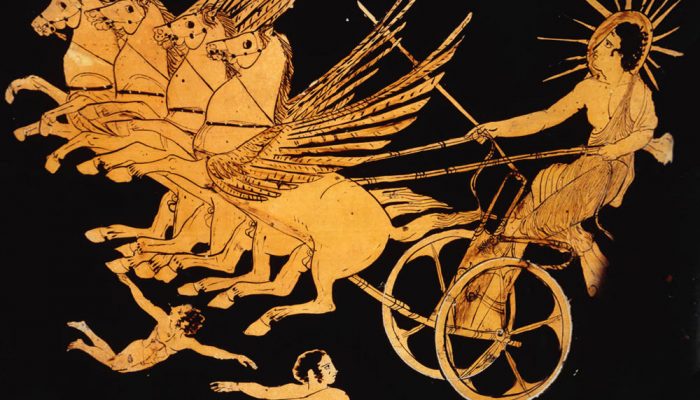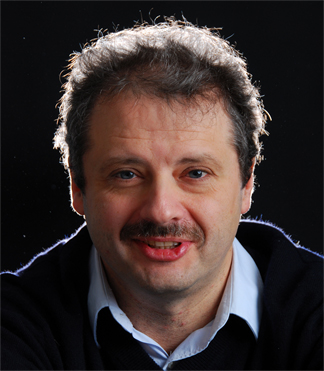
In the May issue of the Life of a Scientist we have the pleasure to talk to Prof. Ilya Usoskin from the Univeristy of Oulu, Finland. Among numerous things, he is the head of the Oulu Cosmic Ray station and receipent of this year’s Julius Bartels EGU Medal; a decision that was based: “on his contributions to the understanding of the heliosphere, long-term changes in the solar activity and solar-terrestrial relations”.
Prof. Usoskin, can you please introduce yourself ?
I am a Russian-born and -educated scientist living and working in a quiet and charming city of Oulu in Northern Finland. In my research I combine both experiment and theory.
As an experimentalist, I am the head of a cosmic ray station and operate a ground-based neutron monitor of Oulu, which is recognized as one of the most stable long-running neutron monitors in the world, a muon telescope, and, since 2015, the world’s most sensitive to low-energy cosmic rays neutron monitor on the Antarctic plateau, thanks to hospitality of the Franko-Italian Antarctic station Concordia. As a theoretician, I am focused on cosmic-ray induced effects in the Earth’s atmosphere, including the firstly developed full numerical model of cosmic-ray induced atmospheric ionization. Of course, as rooted in both experiment and theory, I work actively on data analysis and interpretation, with emphasis upon long-term solar and cosmic-ray variability.
You are a recognized expert in cosmic rays, solar-terrestrial relations, neutron monitors and space weather. What got you motivated, in the beginning of your carrier?
If you expect a nice story of a strongly motivated fellow who was developing according to a well elaborated plan, this is not my case. Earlier part of my career was more like a random walk. No focused motivation or conscious choices. Eventually I migrated to the field where there was a large gap, viz. sensitivity of a neutron monitor to solar energetic particles, and I explored this deeper. Then a new gap in the knowledge was found, and another one…
Do you have any analogies to help us understand what you do ?
There is a remote analogy. Imagine, you permanently reside in your homeland and grow crops. Of course, you want to know about the weather – can you thresh the grain today or better wait until tomorrow? You may know some weather lores, e.g., that the red sunset implies a windy day tomorrow, or from the shape and color of clouds you can predict that rain will start soon, and you start stacking the hay… That’s what Space weather does. We study Space climate. Keeping the same analogy, we try to understand the overall long-scale processes driving the everyday weather. We try to estimate the probability of a cold or warm winter to occur this year or a decade ahead. Of course, the exact weather for each particular day next summer cannot be predicted, but a probability of a cold and wet summer to occur can be evaluated.
At the General Assembly in 2018 you have been awarded the prestigious Julius Bartels Medal. Can you please briefly share with us your discoveries that have lead up to this point?
I am not very sure what were the discoveries which lead to the point. In fact, I haven’t made any discovery, but some results are interesting, at least for me. In particular, we were the first who applied a full Monte-Carlo simulation of the nucleonic-muon-electromagnetic cascade, initiated by cosmic ray in the Earth’s atmosphere, to assess the cosmic-ray related effects. Applying this method to cosmogenic isotopes 14C and 10Be, we were able to perform the first quantitative physics-based reconstruction of solar activity on the multi-millennial timescale. We have shown that solar activity was unusually high during the second half of the 20th century, corresponding to a special case of a Grand maximum, but I would not call it a “discovery”. Generally, IMHO, a systematic study leading to a breakthrough in the long-term solar variability was appreciated rather than “discoveries”.
You are considered as a co-founder of Space Climate, can you please explain what that means in greater detail?
Space Climate implies long-term systematic changes in the near-Earth environment. It is more complex than just a temporal average of Space Weather, because in the latter you cannot see slow trend, tendencies. I would rather say that Space Weather is a snap-shot, instant projections of Space Climate. As a long term we mean everything longer than interannual variability (phases of the 11-year solar cycle) and up to millennia.
I would not agree to be regarded as a founder of the Space Climate discipline. The real father of it is Kalevi Mursula, with whom we discussed 15 years ago that the newly emerging concept of Space Weather is missing an important component, viz. long-term variability. To fill the gap, we organized the first International Symposium on Space Climate in Oulu in 2004, which has become the main Space Climate forum. In February 2019, we will conduct, in Canada, the seventh Symposium of the series, which collects ~150 scientists from all over World. We also regularly convene the related sections at COSPAR, EGU and AGU Assemblies. As an oversimplified analogy, you can study details of summer weather, but then you will be totally surprised during the winter, if you are not aware of different seasons. Most of Space-era data were based during the period of the Modern grand maximum of solar activity, in the second half of 20th century. You can often hear that the Sun is abnormally quiet nowadays. But this is not correct – the Sun is now at its normal moderate level of activity, while it was abnormally active during the previous decades.
Does the future of your research field lie in interdisciplinary synergies and how important is the unrestricted access to data, today?
Exactly ! The future is in inter- and mutli-disciplinary research conducted by teams of experts. This implies the use of different types of data, and free access to level 1-3 data with full metadata is crucial for that. Data of level 0 can be, of course, kept for internal use, but shall be provided to anyone upon request. Unfortunately, the experience shows that errors may occur at any step even with best datasets, and reproducibility of the result is one of the basic principles of doing sciences.
Based on your experience, what scientific questions in your field could be solved in the near-future and why?
We are now approaching the stage when solar variability can be “absolutely” reconstructed from cosmogenic isotopes on the multi-millennial time scale, including individual solar cycles. Previously, only averaged evolution was possible to assess with somewhat “shaky” calibrations. Another very promising idea is to study extreme solar events. Just 6 years ago we could not imagine that a full analysis of strong solar events in the past, before 19th century, is possible. Now we know three such events, and there will be found more, I am sure.
Overall, we will have a quantitative (with higher quality that the sunspot number record on 400 years) record of solar activity over millennia.
What current idea you consider as the most potential ?
Personally, I am most interested now in the extreme solar events. We are close to defining the limit of our Sun in producing such events, and to assessing the probability of their occurrence, which is crucially important for both science, by providing new unique data on solar activity, and space technology and exploration. You would definitely want to know what “worst-case scenario” you may expect from the Sun and what is the probability of this scenario to be played by the Sun during, e.g., a manned mission to Mars. There is a focused research community attacking this problem from different points of view (precise measurements, realistic modelling, sophisticated data analysis), and we will meet in October this year for a dedicated workshop in Japan (supported by Nagoya University)
What would you like to convey to young researchers who want to work in your field?
My message is very simple: Do what you like in the best possible way ! Try to read state-of-the-art works by best scientists and to say “Hey, it’s good, but I can do it better !” – and then just try to do it better !

